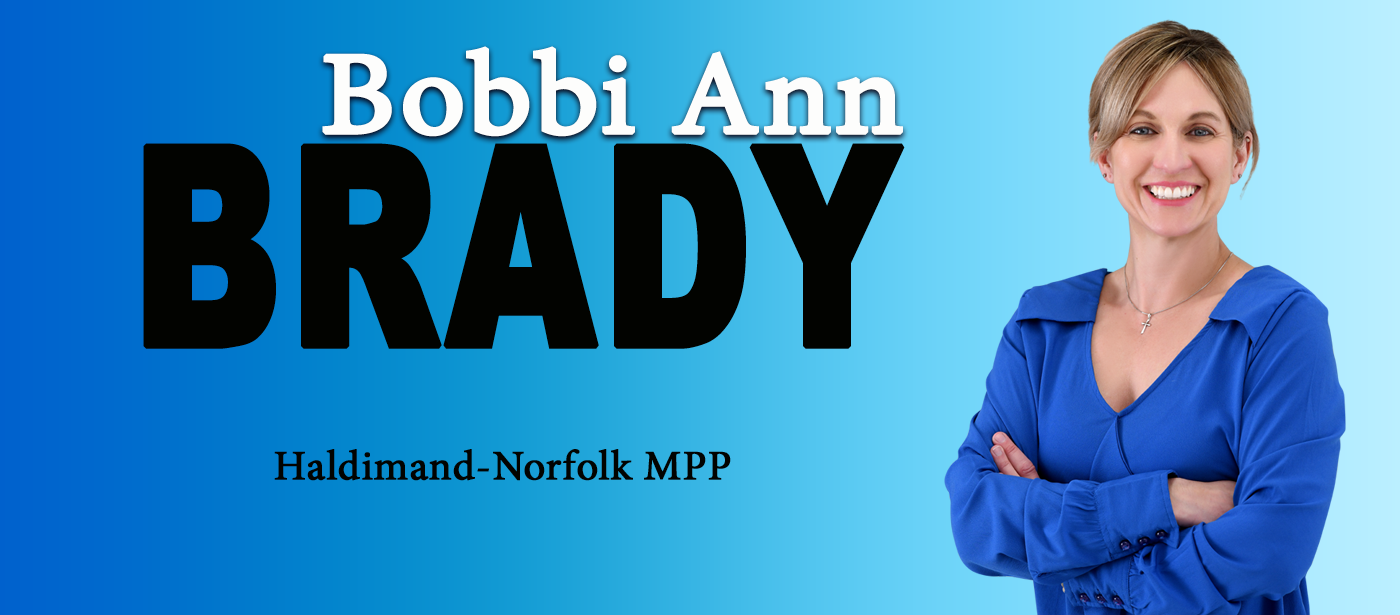By MPP Bobbi Ann Brady
Last Tuesday was the 17th anniversary of the Douglas Creek Estates’ land occupation in Caledonia. Seventeen years later, two governments later, nothing has changed except a second occupied site. There needs to be leadership or clarity regarding productive Indigenous relations on development matters.
On the anniversary, I seized the opportunity to question Ontario’s Minister of Indigenous Affairs, Greg Rickford, on who is in charge at Six Nations. There has yet to be a clear direction from the province on whom would-be developers or investors should consult with — Chief Mark Hill has claimed that he and the Six Nations of the Grand elected council is the authority. At the same time, the Haudenosaunee Confederacy Chiefs Council (HCCC), a collective of hereditary leaders and supporters, takes exception to this and says the elected council does not represent the Haudenosaunee people on any issue. To complicate the situation of authority further, there exists the Haudenosaunee Development Institute (HDI), which is, in essence, a development arm of the HCCC and collects fees from developers.
While this battle ensues on who represents the Haudenosaunee people who are Six Nations band members, those trying to do business either end up paying fees to HDI or being scared away because they are uncertain what the rules are. Haldimand County Council has attempted to obtain clarification from the minister but has yet to succeed — that’s not the county’s failure! The most recent attempt was at the Rural Ontario Association of Municipalities (ROMA) convention in January.
At a recent news conference, a reporter also attempted to seek clarification. Again, the minister did not answer the question.
Thinking the third time may be the charm, I stood in the Ontario Legislature to ask Minister Rickford what the policy was. I assure you, there was no charm. In his initial response, I thought for a moment that he was the Minister of Energy as he took a great deal of time to detail the Oneida Energy Project. By the end of his initial response, I was still waiting for an answer to the critical question.
I doubled down and reminded him of Chief Hill’s sentiments. Knowing full well he had the final word and that I would not have the opportunity to respond, he said: “If this member really understood the dynamics and the responsibilities of different levels of government, it would be perfectly clear to her that the most important thing that the province can do is work with the elected council of Six Nations of the Grand and, as the chief has explicitly requested, to have many of these issues and many of these opportunities settled at the community level.”
His disrespect did not go over well on my social media feeds. Not to worry, I have broad shoulders. At the end of the day, if the minister is working with Chief Hill, that’s fantastic news. Still, perhaps he should also communicate with others who have a stake in the issue – like Haldimand County, which has good relationships with Six Nations. I also wonder why it’s taking the minister so long to reveal the framework….time is ticking, and money is being lost.
I understand the Crown has a duty to consult, and the province has gladly handed that duty down to the municipalities without a framework. Municipalities are instructed by the province to engage Indigenous communities but are attempting and taking best guesses on meeting a non-defined standard. It’s inappropriate.
This deflection and poor behaviour frustrates those wanting to work toward common goals and foster good relationships. I don’t deny this is a complex issue, but ministers are, at times, required to make tough decisions.
Bobbi Ann Brady is the MPP for Haldimand-Norfolk
